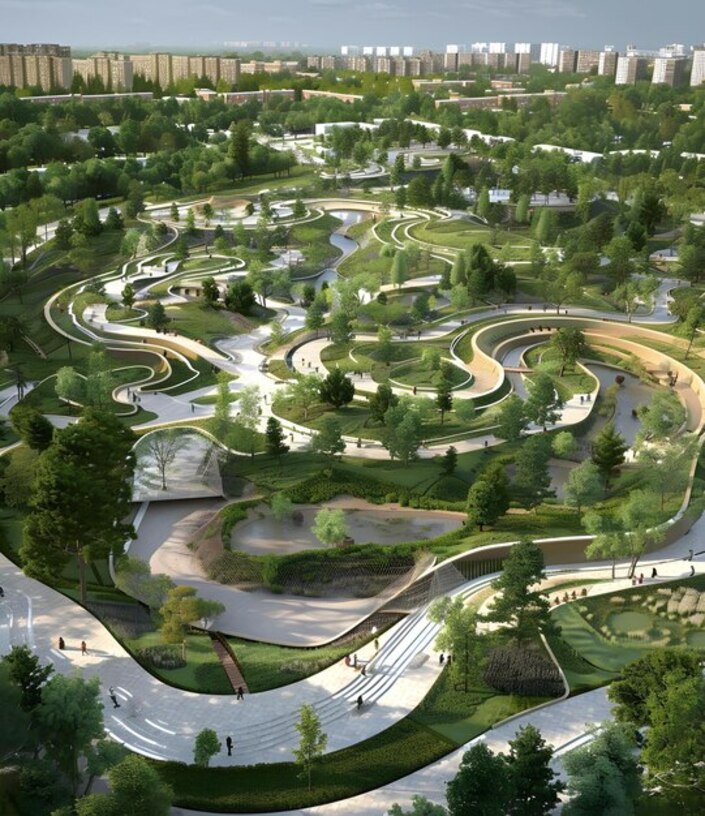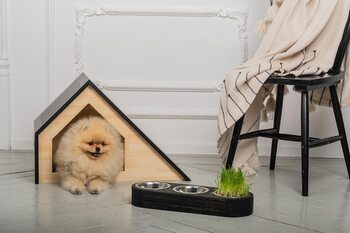Urban spaces: balance between aesthetics and daily functionality

Urban spaces: balance between aesthetics and daily functionality In a world where the pace of life is increasingly fast, urban spaces must be designed to offer not only beauty but also practicality. Finding that balance between aesthetics and daily functionality becomes an exciting challenge for architects, urban planners, and all of us as citizens. This article will take you on a journey to explore how we can transform our urban environments into places that not only delight the eye but also serve our everyday needs. Discover how harmony can redefine your experience in the city!
The importance of urban design in quality of life
The importance of urban design in quality of life Urban design has a direct impact on the quality of life of citizens. Well-planned spaces foster social interaction, promote healthy lifestyles, and reduce the stress associated with urban living. For example, accessible parks, pedestrian areas, and bike lanes not only beautify the urban landscape but also encourage people to leave their homes and enjoy the outdoors. When aesthetic elements are combined with effective functionality, environments are created where communities can thrive and connect with one another.
Additionally, good urban design considers aspects such as safety, sustainability, and inclusivity. The strategic arrangement of buildings, efficient public transportation, and green spaces not only improves mobility but also contributes to a safer environment for everyone. Cities that prioritize these characteristics often experience fewer social conflicts and greater community cohesion. Ultimately, a conscious approach to urban design can radically transform our daily experience in the city, enhancing our overall well-being and life satisfaction.
2. Aesthetic elements that enhance functionality
Aesthetic elements in urban design can play a crucial role in enhancing the functionality of spaces. For example, the use of urban furniture such as benches and tables that not only beautify the square but also encourage social interaction and provide comfortable places to rest. These elements are more than mere decorations; their strategic placement can facilitate the flow of people, promote community activities, and create meeting points, transforming monotonous areas into vibrant centers of daily life. By integrating beauty with utility, an environment is achieved where each element has a clear purpose that benefits the citizens.
Additionally, the appropriate selection of plants and landscaping can radically transform an urban space by providing shade, reducing pollution, and improving the psychological well-being of its inhabitants. Vertical or rooftop gardens not only add an impressive aesthetic touch but also serve as thermal and acoustic insulators. The conscious incorporation of these natural elements allows for the creation of pleasant microclimates that invite people to enjoy the outdoors. Thus, by merging aesthetics with functional components in the urban landscape, a deep connection between people and their environment is established, promoting a higher quality of life in our cities.
3. Green spaces: a necessary breath in the midst of concrete
Green spaces in urban environments are more than just simple recreation areas; they are oases of health and well-being amidst the daily hustle. These natural lungs not only beautify the landscape but also provide a necessary respite for citizens seeking to disconnect from the noise. The presence of trees, gardens, and parks allows for a closer interaction with nature, which translates into both physical and psychological benefits. Studies have shown that spending time in green spaces reduces stress, improves mood, and promotes a more active life, making them essential elements for a balanced urban life.
Additionally, green spaces play a crucial role in urban sustainability. They help mitigate the heat island effect generated by concrete and the lack of vegetation, while also improving air quality by absorbing pollutants. Incorporating green areas into urban design not only enhances the overall aesthetics of the city but also promotes a healthier environment for its inhabitants. From community gardens to tree-lined plazas, these initiatives foster a sense of community and belonging among residents, transforming every urban corner into a place where daily functionality and beauty coexist harmoniously.
4. Urban mobility: connectivity and accessibility as keys to design
Urban mobility has become a central axis in the design of urban spaces, where connectivity and accessibility are fundamental to ensuring a smooth and efficient experience. Modern cities must be conceived as integrated networks, where different modes of transportation—whether pedestrians, cyclists, or public transport users—coexist harmoniously. A design that prioritizes mobility not only facilitates the daily movement of citizens but also promotes a healthier and more sustainable lifestyle by reducing dependence on cars. By integrating bike lanes, wide sidewalks, and intermodal transport stations, environments are created that foster well-being and social interaction.
Moreover, accessibility is key to ensuring that all residents can fully enjoy the urban space. This involves designing infrastructure that considers the needs of people with disabilities, the elderly, and families with young children. The implementation of ramps, audible traffic signals, and intuitive signage helps create an inclusive environment where every individual can move freely. In this sense, urban design must transcend mere aesthetics; it must respond to the real needs of its users, ensuring that every corner is functional and welcoming. This is how a city is built that is not only visually appealing but also truly livable for everyone.
5. Success stories: cities that have achieved the perfect balance
Cities that have achieved a perfect balance between aesthetics and functionality are inspiring examples of how these two aspects can be integrated into urban design. An emblematic case is that of Copenhagen, where sustainable mobility and the creation of attractive public spaces have been prioritized. Its wide bike lanes, well-designed parks, and pedestrian zones not only beautify the city but also promote a healthy and active lifestyle among its citizens. The implementation of projects like the "Copenhagen Harbour Bath," which transforms industrial areas into recreational spaces, demonstrates how creativity can turn the utilitarian into a memorable experience.
Another notable example is Medellín, which has transformed its urban landscape through innovative architectural and urban solutions. With projects like the Metrocable, which connects peripheral neighborhoods with the city center, it has achieved not only improved access to public transportation but also revitalized entire communities. Additionally, initiatives like the Vertical Gardens in historic buildings have added an aesthetic touch while promoting environmental sustainability. These integrated strategies demonstrate how cities can become vibrant environments where residents enjoy both visual appeal and optimized daily functionality.
6. How to engage the community in the design of urban spaces
To achieve successful urban design, it is essential to involve the community in the planning process. Listening to the voices of those who inhabit a space allows for a better understanding of their needs and desires. Surveys, workshops, and community meetings are effective tools for gathering ideas and opinions on what features they would like to see in their everyday environments. By fostering this dialogue, not only is greater acceptance of the project achieved, but a sense of belonging among residents is also built, making each designed space truly representative of the community that uses it.
Additionally, implementing collaborative initiatives like community murals or urban gardens can further strengthen the bond between citizens and their environment. These activities not only beautify public spaces but also promote social cohesion and collective care of the area. By integrating local art or natural elements into urban design through citizen participation, a unique identity is created that reflects the cultural diversity of the place. In this way, urban spaces become not only functional and aesthetically pleasing places but also vibrant settings where the community can interact and thrive daily.
7. Future trends: towards sustainable and attractive urbanism
The trend towards sustainable and attractive urbanism is becoming an urgent necessity in the design of urban spaces. This approach prioritizes the creation of environments that are not only visually appealing but also minimize their environmental impact and promote a healthier lifestyle. The integration of green areas, efficient public transport systems, and the promotion of active mobility, such as walking or cycling, are key elements that contribute to a balance between aesthetics and functionality. By implementing these principles, cities can become places where nature and infrastructure coexist, thereby improving the quality of life for their inhabitants.
Additionally, sustainable urbanism promotes social inclusion by designing accessible spaces for all citizens. This means considering diverse needs through projects that promote equity and community well-being. From public squares to cultural centers, each element designed with this approach seeks to unite people around shared experiences. Fostering an emotional connection with the urban environment not only beautifies our cities but also strengthens social ties and revitalizes entire communities. Ultimately, where these trends are heading is towards a future where every urban corner is a reflection of the perfect balance between functional beauty and sustainability.



